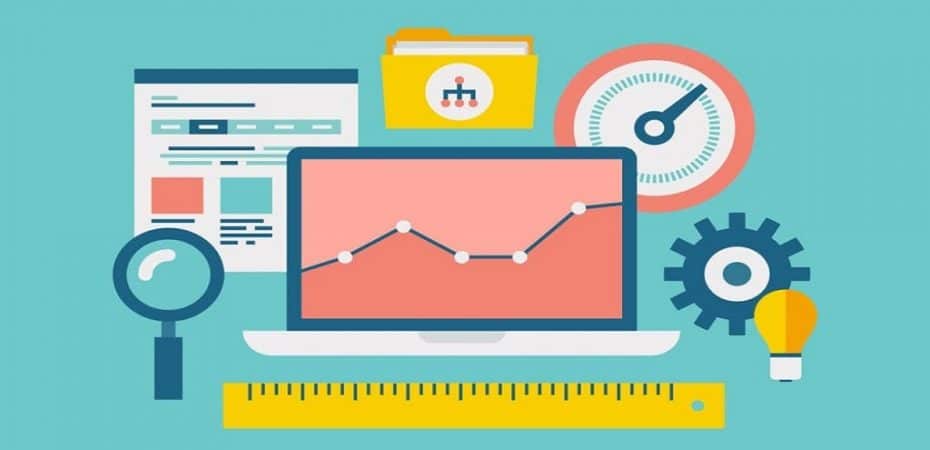Website management is a constant undertaking, and the wider the site or, in some circumstances, a portfolio of web pages, the more difficult it gets. Admins must remain on top of website upgrades and maintenance, whether they’re working with patch management, old code, or error messages, to ensure the web pages flourish.
It’s critical to ensure everything is in functioning condition to optimize the number of times users are likely to engage with the site and give them fewer incentives to depart. These five guidelines can assist website administrators in maintaining and achieving a healthy website.
Patching Up Vulnerabilities
Fixes for security vulnerabilities in the operating system should be applied as soon as possible. Patching for vulnerabilities is ordinarily classified as a security, moderate, or critical level patch.
As soon as a patch is available, use a vulnerability scanner to verify the specifics of the error or vulnerability to determine how it affects the current system and take the appropriate steps to deploy the fixes as soon as possible. Cross-verify the compatibility of programs with fixes or updates. Since incompatibility might result in more effort than any administrator wants, this is an important step that admins don’t want to overlook.
Keeping up With Upgrades

Updates are the core of web page maintenance. There are three main areas of updates for which admins should have updated knowledge to direct their focus.
Plugin Updates
Webpage plugins are bits of third-party code that enhance the site’s performance. Plugins may be used to add a wide range of features, from web forms to analytical monitoring tools.
Theme Updates
Themes are what determine the general appearance of a web page. The aesthetic factor is sometimes overlooked, but that’s largely a dire miscalculation. An attractive theme will attract and retain traffic to a web page more often than normally perceived.
Webpage themes are files that define the template of web pages, and an attractive, user-friendly template is what admins should aim for while bringing in new updates.
Core Updates
The webpage core is a collection of files that work together to produce the back-end interface and performance. These upgrades are usually big releases, and they serve as the foundation for the site.
As soon as the web admin has investigated the build, they need to be maintained up to date. Significant security updates and hotfixes are included in periodic versions of the website core, so keep an eye out for them. One of the best places to stay up-to-date with the said trends is through reliable communities and blogs.
Backup Everything
The most important practice is, without question, backing up the site. Any upgrades or modifications will likely cause the web page to malfunction or perhaps even collapse, neither of which are desirable consequences.
Digital marketing has supplanted traditional advertising. The last thing web page administrators want is for their site to go offline, resulting in lost visitors and lost business. Administrators must ensure that a backup is performed. Backups can also be performed as standard processes for bigger sites like E-commerce, preferably daily. If something goes south, the website may be returned to a previous version.
That way, even if the worst happens, no harm is done. After all, having a webpage reverted back to an older version is a better bargain than having an offline webpage.
Testing

Testing is an important element of keeping a website up to date. It’s easy to overlook an error, whether it’s because of a faulty patch or because the admin uploaded stuff wrongly.
To effectively fight this, take a moment to go through every website page and test each hyperlink and widget to verify that everything is working properly. Remember to run tests on smartphones since smartphones account for over half of all internet activity.
The testing procedure, especially for bigger websites, may be intimidating. Fortunately, there exist technologies that can come to the rescue and specialists like IT engineers and online resources that can help make the process go more smoothly. Resources that include on-page SEO tools are excellent places to start. They cover the availability of backlinks and any other concerns that might hurt a website.
Optimization
The site’s database must be optimized as a top priority for webpage upkeep. The bloating of photographs and videos in the WordPress media library might make it quite large. Sorting out unnecessary photographs, identical pictures, and photos with unoptimized data size is a good idea. A well-optimized page is also rich in fresh content giving it a boost in attracting new web traffic. Not to mention a better response time that regularly optimized websites enjoy. The takeaway here is an enhanced user experience and better business is the core advantage of web page optimization.
Other Useful Tips

Visitors are a great source of feedback, but only if they have a simple mechanism to contact site admins. Therefore, it’s crucial to encourage feedback and recommendations and urge people to evaluate the site whenever feasible. Their constructive critique will help to improve the website’s overall experience for all visitors.
Second, concentrate on producing new blog material that will entice people to return and keep them interested. Search engine algorithms may conclude that the said site is a leader in the sector as a consequence of frequent visits and strong interaction, raising its rating in search engine results and bringing in even more visitors.
Conclusion
Website upkeep can be time demanding, but it is well worth the time and effort in the long term. While there are tools that will routinely transmit updates, the dependability of such algorithms doesn’t always cater to specific flaws and problems. Nothing can beat the power of a well-researched and diligent approach web page admins can take.
A web page has the strongest chance of running free of difficulties when it is backed up, upgraded, tested, and optimized on a routine basis. Putting in the time and effort for web page maintenance has two-fold benefits. Users will have a richer experience, and businesses will benefit.
Read also:
- Recent Trends in Mobile App Development in 2022
- How Well Outsourcing Software Development Team Works
- How To Choose The Best Fintech Software Development Company
- Signs your Business Needs Custom Software Development
- How To Choose A Right WordPress Development Agency
- How to Manage Offshore Software Development Team
- Trends Transforming The Mobile App Industry Outlook In 2022

